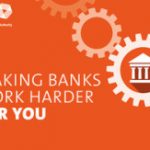Microsoft founder Bill Gates on financial inclusion in India, Aadhaar, sanitation and philanthropy in general.
New Delhi: Bill Gates describes himself as a technologist, business leader, and philanthropist. More recently, he was called the most generous man in the world.
According to the Forbes magazine, Bill and Melinda Gates have given away more money— over $29 billion—than anyone; they co-chair a charitable foundation.
Gates was in India recently to lend support to the new focus of the foundation in India: financial inclusion. He took some time off to speak to Mint on this and more. Edited excerpts:
Notice you are wearing a Swachh Bharat lapel pin.
We work in part with the government on sanitation, particularly measuring the quality of the toilets that they have maintained and then what we call the faecal sludge management—really, look at every city and saying how much of the sewage is being processed and how it is being picked up.
So the government gave you the lapel pin?
I was with the minister and he gave it to me.
Which minister, the prime minister?
No. The urban development minister (M. Venkaiah Naidu). But then I wore it in the meeting with the PM.
Did the PM notice it?
He may have, but we were talking of many, many things; we talked about sanitation—he’s been pushing that.
Mark Zuckerberg and his wife recently donated a huge amount to philanthropy. In some sense, you were the trendsetter in this way of giving. Do you see more people doing this? You did make a trip to India a few years back and spoke about this.
The growth of philanthropy in India is pretty fantastic. Mark and his wife Priscilla’s commitment is quite phenomenal; he is doing it at a younger age than I did, and he will get a chance to learn. He is also a good friend, we do a lot of philanthropy together, but he is going to make such a huge contribution; he is going to be such a good example to everybody else.
Your own approach is very outcome-oriented philanthropy, focusing on problems that you think are big and where an intervention will make the most difference.
We decided that health was a great injustice globally,that there was very little investment in the tools of delivery of health for the poorest—and that became our primary focus. So we built an institution that knows a lot about HIV, Malaria, TB (tuberculosis)—about 14 different diseases that account for most of the difference between the poor people’s chances of dying versus middle income. So that is something every year we track the progress, set ambitious goals, some amazing partnerships. It is very enjoyable work.
When did you shift your focus to financial inclusion?
We have actually had our financial services group for over eight years. We weren’t as visible as we are now. Because our strategy when we first started out was similar to other people’s: we were backing microfinance activity. We still think it is a good thing, but then we decided that accelerating the digitization of the finance system—some would say put it on a mobile phone— that’s the only way we would get really low transaction fees.
If you looked at the interest rates people pay, they are very high whenever you have to have a lot of transactional overheads. And the only way to move small amounts of money with very low fees is when no humans are involved—in other words, have a digitized system.
So, we went to Kenya and looked at M-pesa and what was still limiting in terms of the openness, looked at the fees structure, and we took that to some other countries. Our main goal is to get the digitization going.
We are looking at the payments banks regulations, which is a huge advance; we’re very excited that next year a number of those companies will roll their products out, there will be robust competition.
We think India could actually get to the front of this whole digitization thing pretty quickly.
So it is about three years ago that we really made that (financial inclusion) the primary focus of our strategy. Once the digital rails are in place then we will focus on making sure that people come up with good products for farmers, savings for education and health, insurance for farming and health.
What makes up the ecosystem? Does India have the right regulations in place?
Till the payments banks came on, the answer is no; it was too complicated—the way you set up agents and the distance and who could do what.
Is there one emerging economy that India should look at?
Somaliland is a sort of a country and it is sort of not (it broke away from Somalia, declaring independence in 1991). It is very small. But it is phenomenal. As a percentage of GDP that goes through cellphone-based money they are the highest in the world. There are some very good things that have happened in Kenya.
Somaliland has all the regulations in place?
Essentially, there is this one mobile phone company that is allowed to do it, and they do it superbly well. It is not a formal system as India.
The financial inclusion agenda rests on Aadhaar, which is presently embroiled in a legal controversy on concerns of privacy. Where do you stand on this?
I really don’t understand the privacy argument. Aadhaar, all it does is it checks whether your 12 digit number is really yours or not. It is a system that says a yes or no, are the biometrics I present, the ones associated with this 12 digit number, or not.
And so I call it the 12-digit liar system: are you lying about the 12 digits being yours or not. That in itself presents no privacy issue.
Independently of how you authenticate the user, the question about my medical records and my bank records, who should see them, can the police see them without a court order are issues; but I don’t understand how Aadhaar, which is just a form of identification, presents a privacy issue. It is a very nice system, it would be very helpful to use in this context. Because the idea is that you know who the person is—in the case of a bank account you don’t want someone to be able to pretend they are someone else.
You mentioned in passing that next year will be a big year for financial inclusion in India. Do you see any downside risks of this not happening?
It is possible that it will not come up to scale next year. I think we have all the things in place. But we have to train the agents very well, the agents have to decide that economically, the equation works for them, they have to give good support, the interface has to be easy.
Somebody says they pushed the wrong button and their money disappeared, he doesn’t get a refund and then he gets a headline in the paper and that sets things back. (Chuckles) It is a consumer product.
I don’t know for sure, but it is very likely that things go well next year. But if not, we are patient; we think the idea is worth continue trying till we get it right. We think it is very beneficial that the way to have really good financial services that include poor people is to have the efficiency of the digital back end.
That is the key?
Yes, it is the key enabling piece. We look forward to a point where our foundation instead of helping bootstrap the enabling environment—the digital rails—can go and figure out what are the missing products that would help poor people in terms of savings.
A similar effort in microfinance had run aground.
But microfinance, even though it did not solve all problems, overall was a very positive thing. It is very unfortunate that the sentiment swung, unfairly, I think, so much against it and actually made it a very difficult business.
And people think that I don’t have to repay these guys because who is going to force me as these guys are under attack. So, we always knew the interest rates on microfinance were fairly high; and, we should all want to come up with the construct that has the advantages of microfinance but with a somewhat lower interest rate structure. And we believe in this digital world that it is starting to emerge.






